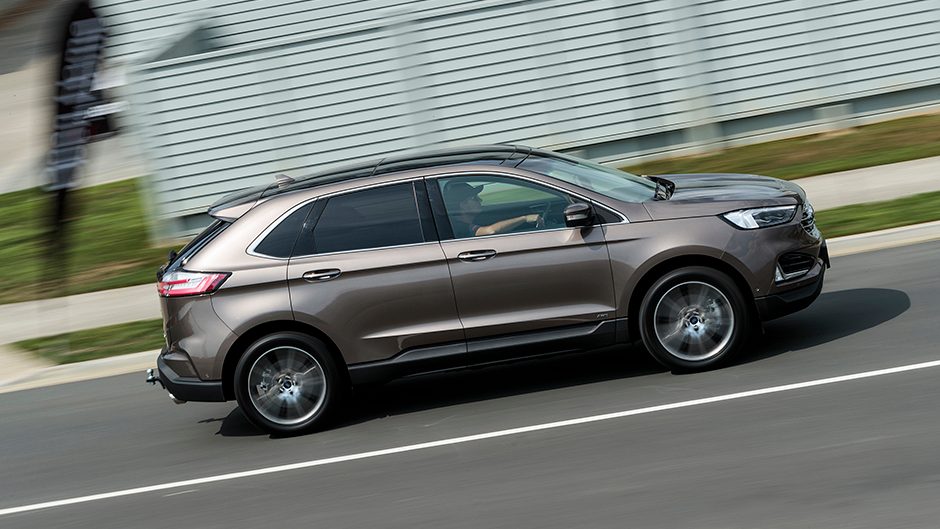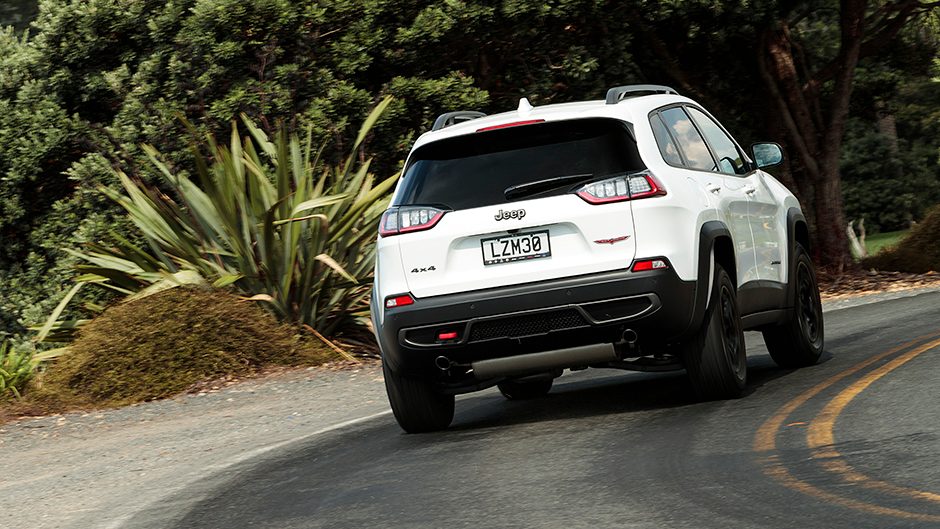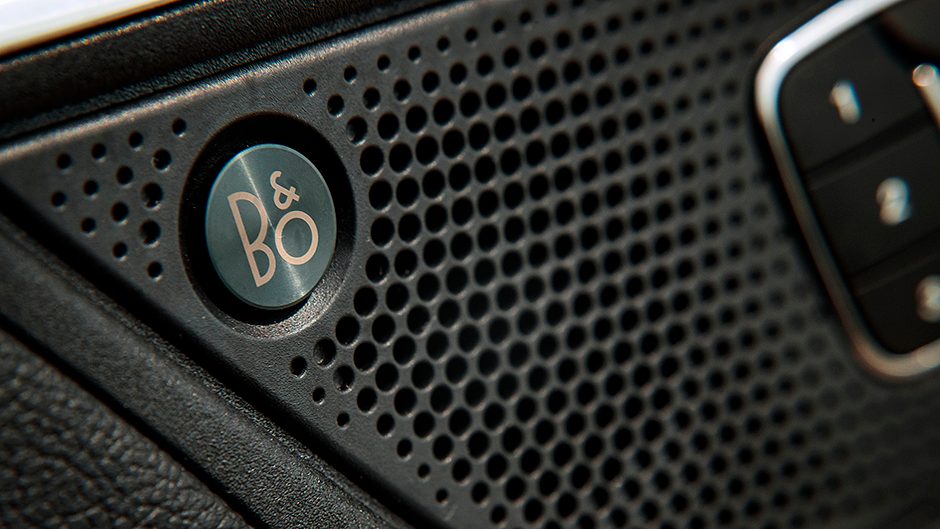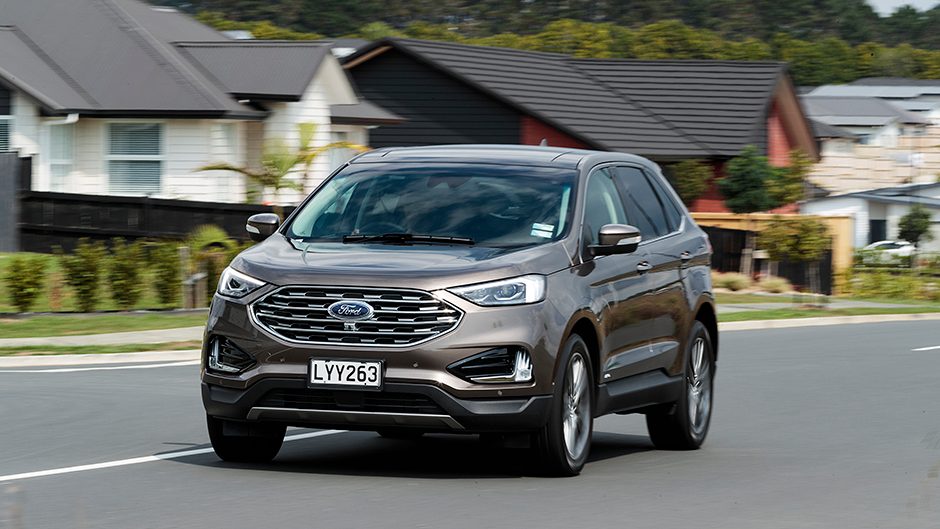This pairing might seem odd, but then the SUV genre is slightly curious anyway. The duo does share a few things in common however. Both Ford’s Endura and Jeep’s Cherokee are designed and built in the US, and find themselves exported for worldwide consumption. Here, they are pitched at the upper tier of the mass market, searching for buyers with $60k plus to spend on a five-seater wagon with all the trimmings.
Each fills a slightly different niche, however. The Cherokee is of the Trailhawk variety, being ‘Trail Rated’ and is brimming with off-road worthiness, while the Endura Titanium fills its spec sheet with goodies galore. So their appeal is slightly different, but both are worth considering for those who don’t need or want a big seven seater.

Refreshed both
Ford’s Endura, or Edge as it’s known in the US, dates back to 2015, but was only introduced here late last year with a limited run of the ST-Line variant. It’s been made over for 2019, and there are now four Enduras to choose from, starting at $53,490 for a 2WD Trend, (plus $3000 for AWD), the ST-Line is now $64,990 (down from $73,990 previously, though now with less specification) and the Titanium is $69,990.
The sole engine is a 2.0-litre diesel. This time around it has only one turbo, so power is down from 154kW to 140, and there’s 50 less Newtons to 400Nm of torque on tap from 2000rpm.
The move is said to be for efficiency, although the emissions rating is still at Euro 5. The other change is the move from a six-gear twin-clutch transmission to an eight-speed torque convertor auto. The on-demand AWD system has also been modified for faster responses to reduce front wheel slip.

And when it’s not needed, the rear drive disengagement now takes place at the gearbox rather than the diff to save further energy losses. Jeep’s Cherokee first debuted in 2014 complete with its polarising front-end design. While the look didn’t hinder sales in the US, where it’s said to be doing well, for the 2018 remake, the company took the opportunity to rethink the styling. Gone are the predatory peepers, replaced by larger units, with the secondary light source moved lower on to the new-look bumper.
We reckon it’s a solid improvement, especially for the Limited model. The local line-up now comprises just two models, the $60k Limited and the $65k Trailhawk. The 2.4-litre Tigershark (the toothless tiger) has been kicked into touch and the remaining models are powered by the 3.2-litre V6 with 200kW, and 315Nm of torque at 4300rpm. They have a nine-speed auto, and the AWD system has a similar rear axle disconnect from the gearbox.
However, the Trailhawk adds bits like selectable traction control to help conquer the terrain being tackled, along with a low-range gear set and a locking rear diff.
Nice enough
There’s an air of premiumness in each cabin, with dash stitching and more soft plastics than not, though there’s a heightened sense in the Endura where the materials and finishing are generally better, down to the soft touch edge of the centre console. Each has a dated look about the centre stack with their array of buttons but are topped by easy-to-use touchscreen infotainment systems, both enabling smartphone integration if you prefer.
They each have bassy systems when cranked up, the Ford’s B&O in particular. The Endura has a new rotary gear selector, although if you’re too quick to flick between D and R, the by-wire system doesn’t always engage reverse in a timely manner. And while it replaces the big old lever, it doesn’t free up any more usable space. Not that storage is an issue, the centre box particularly cavernous, but there’s no charge pad, nor in the Jeep. The Endura’s instrument panel relays added info via three configurable displays inside the main dials.
The Jeep delivers a more upright, command-type driving position with enhanced adjustment, and though neither has a great seat, the Jeep’s has better form. They both have powered pews with heaters and ventilation. There’s more interior space in Endura which stems mainly from its additional width, though it is longer overall as well.

The back seat accommodation is lounge like, with abundant knee room and a flat floor lends more space for a middle seat passenger. Its standard-fit glass roof doesn’t impinge on head space either. The Jeep would be a squeeze with three across the rear, but it’s comfy for two where there’s also good legroom. Some will appreciate the entertainment screens in the rear of the Endura, and USB power plugs, along with a 220V inverter to keep everyone’s fave devices juiced.
There’s more boot space in the Endura, with a wider, longer and deeper hold. Housing a full-size spare under the boot floor doesn’t help the Jeep, though its split folding system realises a flatter floor than the Ford’s. For tow, the Jeep offers 200kg more at 2200kg braked, while Ford equips the Endura with a hitch as standard.

City life
Each has a team of driver helpers including automated parking to get you in (and in the Jeep’s case, out of) tight spots, while the Ford has a camera up front, which is handy for lining up the park. The Jeep’s active cruise is superior, working as it does down to a stop in traffic where the Endura’s bails out below 30km/h.
The Ford has speed sign recognition which does well on those variable LED types but can miss temporary roadworks limits. It has better lights too, though the auto high beam function seemed intent on blinding oncoming traffic, so we had to switch that off. Both engines deliver strong, easy progress about town. The Endura doesn’t suffer any real lag, and the auto’s a smoother operator than the old twin-clutcher, especially first thing in the morning.
It’s set to slur through the gears on a constant throttle, plugging the engine’s torque at 2000rpm. For occasions when you want more thrust, you have to flatten the gas pedal but it eventually kicks on. The Jeep’s V6 has a more immediate throttle response, and there’s torque below 3000rpm for general urban sorties. It can feel lethargic moving away from a brief pause as the gearbox likes to think it can haul away again in second gear.
Like Endura, it swaps gears smoothly, and drops them again quickly enough with some persuasive throttle inputs. The diesel is quiet, so too the V6 until about 3000rpm when it gives a bit of a growl. For the usual mix of driving scenarios, the trip computer was reading 7.9L/100km in the Ford and 11.3 in the Cherokee.
Neither has any glaring blind spots while each has a monitoring system for easier motorway merging. The turn around circles are a tad larger than desirable, while the Ford has the lighter steering, and also rides well with little in the way of bump and jiggle. The Jeep isn’t quite as resolved in this area, with a few more bounces from the rear.
Country ramblings
With American genes, it’s no surprise each is a little porky, tipping in just over the 2000kg mark, and the mass can be telling. The Endura turns better, with just enough steering feel to help it along. Riding lower, it rolls less, and with wider rubber, it holds a cornering line better, which is helped further by brake-activated torque vectoring. There’s no such helper in the Jeep, just an audible alert from the tyres telling you to cool it. Both isolate the bumps well and are quiet on the move.
The weight is most telling on the pace of the Endura, its overtaking prowess lacking, while the V6, with its higher rev ceiling, gets it done a tad easier. The Ford’s powertrain responds better in S mode, hastening throttle response while the auto will hold a gear longer. Endura’s diesel has a narrow band, working from 2000 to 4000rpm, where it’s all but done. The atmo six will keep on the pace using between 2000 and 4000rpm, though kicks on better from 4000, while the occasional flick of the paddles helps gear selection.
We drove this off road at its international launch where it crawled its way through a rocky canyon, and up and over loose gravelly ascents, making the most of its low range and diff lock. There’s more ground clearance and axle articulation here, where the Endura can struggle when pulling off onto the soft shoulder, cocking a rear wheel while the traction control struggles to stop spinning wheels.
So which is it?
It depends on what you want, essentially. The Cherokee will do more than just the school run but has sufficient manners and refinement for a life in the city. Endura is better suited to city life however, and with lower fuel use and longer service intervals, will be a better bet for those with high mileage lifestyles. The big warranty is good too, as is the added interior space.
| Model | Ford Endura Titanium | Price | $69,990 |
| Engine | 1995cc, IL4, T/DI, 140kW/400Nm | Drivetrain | 8-speed auto, on-demand AWD |
| Fuel Use | 6.7L/100km | C02 Output | 176g/km |
| 0-100km/h | 10.50sec | Weight | 2035kg |
| Model | Jeep Cherokee Trailhawk | Price | $64,990 |
| Engine | 3239cc, V6, EFI, 200kW/315Nm | Drivetrain | 9-speed auto, on-demand AWD |
| Fuel Use | 10.2L/100km | C02 Output | 236g/km |
| 0-100km/h | 9.56sec | Weight | 2005kg |


